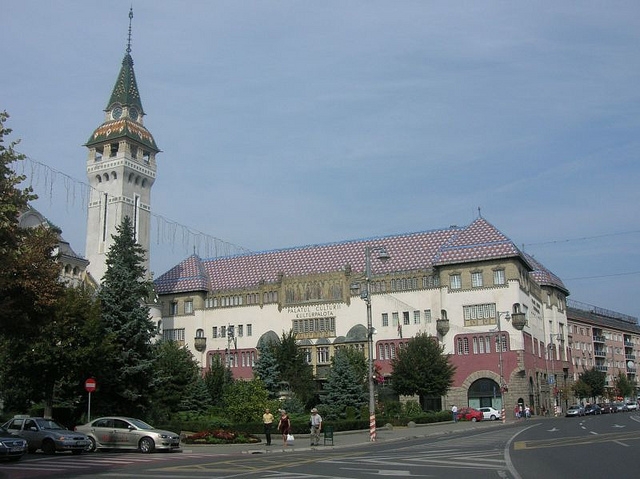Rural tourism in Mures
Mures County takes its name from the Mures River crossing the Transylvanian plateau from the northeast to the southwest.

Ana-Maria Cononovici, 27.03.2014, 12:41
Although Mures County isn’t generally referred to as a rural tourist destination, the hotspots around Targu Mures and Sighisoara are very sought after by most of the travelers.
So, our journey begins in Targu Mures, a place deeply steeped in history, a major cultural and trade center of the Middle Ages. The sixth largest city in Transylvania, Targu Mures boasts the largest community of ethnic Hungarians in Romania. Our guide today is Demeter Attila, inspector of tourism with the Mures County Council who in the following minutes will be introducing us to the regions’ most attractive areas.
“Targu Mures is an old and very beautiful city in Transylvania, which abounds in worth-seeing places. I’d like to refer to a couple of them now: the Palace of Culture, the Teleki Library, which also houses a museum, there are also a few cathedrals, the Orthodox and the Greek-Catholic Cathedrals, as well as a Cathedral that belongs to the Reformed Church, which is located inside the Medieval Fortress.”
Although not many old buildings have been preserved – as the city has been ravaged by a couple of fires throughout its history – it has somehow managed to keep its medieval flavour, particularly in the historical centre. A series of beautifully adorned buildings are reminders of the former medieval burg or the thriving city in the period between the two world wars. Another area of interest is the Rose Square, which takes its name from the numerous roses that grow in the area. The square is also considered the city’s kilometer zero point. Here one can visit the Palace of Culture famous for its Mirror & Stained Glass Hall as well as other representative buildings such as the Prefecture Palace and the Town Hall building. Opposite there lies the Apollo Palace and the National Theatre standing proof of the city’s cultural development.
Another landmark of the city is the medieval citadel, built in the early 17th Century, with strong walls and towers, well preserved to this day. The citadel walls enclose a Reformed church, built in Gothic style in the 16th Century. Today, this is a major venue for various cultural and arts events.
Mures County has large forested areas, and one of its attractions is the Caliman Mountains, where tourists may take long hikes. The County also offers spa tourism options, and the resort of Sovata is well known in that respect. For more unusual attractions, tourists are invited to the equestrian facility in Densuş, or to the famous vineyards in the Tarnave area. Demeter Attila from the Mures County Council has details on the accommodation facilities in Mures County:
“There are hotels and guesthouses with traditional cuisine, generally Transylvanian, Hungarian and Romanian cooking, and with breathtaking views. The menus usually include the Transylvanian steak, which is a grilled sirloin steak, brain fritters, Transylvanian soup and large array of deserts, including chocolate pies and somloi galuska (a home-baked cake consisting in three layers of sponge cake, filled with pastry cream, whip cream and chocolate sauce). But above all, in Mures County you will find friendship, warmth and multiculturalism.”
The average price for accommodation in a double room at a three-star guesthouse is about 18 to 22 euros per person per night.
And if you reach Mures County, you must not miss Sighisoara, dubbed “the Pearl of Transylvania”, a citadel erected in the 12th century. As early as in 1999 Sighisoara was included in the UNESCO World Heritage list, as the finest example of a medieval town of craftsmen and merchants in Transylvania as well as in Central Europe.
The citadel is still inhabited, 731 years since it was built. Nine towers of the original 14 still stand, and can be distinguished by their shapes. The imposing Clock Tower plays a special role as the symbol of the town. Also worth noting are the Coopers Tower in the south-west of the Citadel, the Locksmiths Tower, and the Roofed Staircase or School Children’s Staircase. When it was built in 1662, the staircase had 300 steps, but after the works conducted in 1849, only 175 remained. The roofed staircase was built to ensure easier access for children to the school perched on the City Hill, and for adults to reach the St. Nicholas Church uphill. Every year, a Medieval Festival held in late July fills Sighisoara’s narrow streets with musicians, craftsmen, actors and, of course, tourists.






























